KELOWNA ANNUAL HOUSING REPORT
 PREPARED
PREPARED
BY POLICY & PLANNING DEPARTMENT - MARCH 2020
The Kelowna housing market had another strong year in 2019. Several of the broader events and trends that influenced the 2019 housing market are highlighted below.
Strong economy: The unemployment rate hovered around 4 per cent in 2019 due to major employment growth in 2016-17.
Mortgage stress test: The implementation of the stress test in January 2018 has reduced the purchasing power for many first-time home-buyers and retirees.
Demographic shifts: Kelowna has seen steady population growth over last 5 years. Most of the growth is the result of interprovincial and intraprovincial in-migration.
Housing preferences: Growing interest in walkable urban places and smaller household sizes are resulting in greater demand for multifamily options.
Housing sales finished near the 10-year average, while building permits issued for housing remained well above the 10-year average. Overall, there were five key trends that dominated the 2019 Housing Market.
Multi-family moves the market
From the ownership market perspective, close to half of all sales were multi-family units in the form of strata apartments and row house units. Meanwhile, building permit statistics for 2019 show that 75 per cent of all building permits were for multi-family units (apartment units and row housing). This trend reflects the growing importance of strata apartments as more households choose to live more compactly in the City’s five urban centres.

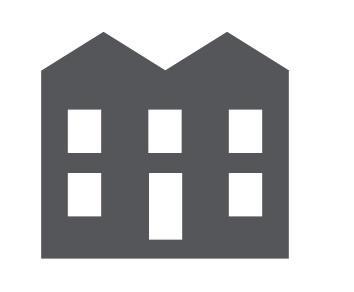



Kelowna’s rental housing boom

A major trend for 2019 was the flood of new rental units that were added to the market. Based on the 2019 Canada Mortgage & Housing Corporation (CMHC) rental market report the overall supply of primary rental units increased by 1,300, resulting in the vacancy rate rising to 2.7 per cent, up from 0.2 per cent in 2017. The influx of new rental units was the culmination of several years where Kelowna saw historic levels of construction activity (Figure 1) in the rental sector, highlighting the considerable supply needed to keep up with increasing demand for rental housing.
Rental goes corporate

The flurry of investment in the local rental market is in part the result of a broader restructuring in the commercial real estate market toward rental housing. With interest rates at historic lows and strong demand for rental housing resulting in rising rents, several major commercial real estate companies are making big investments in the Kelowna market. For example, Skyline real estate investment trust (REIT) made three acquisitions totaling $72 million since December 2018 for 300 rental units.
Attainable family-friendly options
The most active segment in the market in 2019 was the mid-market segment with 44 per cent of sales between $400,000-$699,999. This is the part of the market where there are family friendly housing options (e.g. townhouses, fourplexes, and older single-detached housing) that are attainable for middle income households earning $75,000$130,000 based on monthly mortgage costs not exceeding 25% of gross income.
Affordability of single-detached homes a challenge
Since 2013, median prices for single detached housing have increased by $240,000. At the same time, the recent mortgage stress test has made it more challenging to qualify for the larger mortgages required for more expensive properties. Based on 2019 prices, single-detached housing in the high-end of the market is attainable for households earning $130,000-190,000. As a result, the high end ($700k-$1M) of the market is only an option for 15 to 20 per cent of households based on mortgage costs not exceeding 25% of gross incomes. In 2019 there were over 100 sales for dwellings with a suite for this segment of the market, highlighting how even at the high end of the market housing affordability is a challenge.


ANNUAL HOUSING REPORT | 2 KELOWNA.CA EXECUTIVE SUMMARY
HOUSING MARKET STABILIZES IN 2019
The Kelowna market has experienced a boom in building starts with similarly strong sales numbers over the last three years. Although 2019 saw a dip in sales compared to the peak of the market in 2017-18, the high number of building permits issued in 2019 (Figure 2) demonstrates on-going confidence in the Kelowna housing market. The reduced number of sales from 2018 to 2019 reflects the shift toward a more balanced market with prices stabilizing. The momentum underpinning the Kelowna market in 2019 is consistent with the economic and demographic trends that have made Kelowna one of the most dynamic mid-sized cities in BC over the last five years.
A standout trend for 2019 is the flurry of construction and investment in response to the strong rental demand with over 1,500 rental units completing in 2019.I Single-detached housing continues to deliver a share of the units to meet Kelowna’s growth, but rental housing construction activity and sales in strata apartments and rowhouse units are playing a bigger role in the housing market. The 2019 trends also reflect how affordability challenges and broader shifts in the commercial real estate market are influencing Kelowna’s housing market and buyer preferences.
Although Kelowna has seen a strong housing market for several years, not everyone in the community is benefiting equally from this growth. The city saw continued investment in affordable rentals and housing with supports, but homelessness continues to be a defining issue for the region. The City continues to work with its partners to implement the Journey Home Strategy and ensure housing with supports are available for those experiencing homelessness. Overall, 2019 saw another strong year of sales and starts with a boom in rental housing and strata apartment sales demonstrating the on-going transformation of Kelowna as a housing market defined increasingly by urban, multi-family housing options.
ANNUAL HOUSING REPORT | 3 KELOWNA.CA INTRODUCTION
Figure 2: City of Kelowna Annual Residential Building Permit Issuances 2000-20019
(Source CMHC - Starts by intended tenure )
Rental housing construction activity and sales in strata apartments and rowhouse units are playing a bigger role in the Kelowna housing market
0 500 1000 1500 2000 2500 3000 3500 KELOWNA ANNUAL RESIDENTIAL BP ISSUANCES (2000-2019) Single-Family
0 200 400 600 800 1000 1200 1400 1600 Chart Title
Figure 1: Kelowna Rental Units Under Construction 2010-2019
Multi-Family Average
Source: City of Kelowna Development Statistics Reports
LONG-TERM RENTAL HOUSING
KELOWNA’S RENTAL BOOM
One of the major trends for the 2019 housing market is the emergence of rental housing as one of the key drivers of the Kelowna market. The tide has turned in the rental market after years of limited investment saw vacancy rates plummet to 0.2 per cent in 2017 with many people struggling to find rental options.
ii At the same time, the demand for rental housing has also increased significantly with 73 per cent of new households from 2011 to 2016 identifying as renter households, demonstrating how a greater share of Kelowna residents are now relying on the long-term rental market.iii The demand for purpose-built rental housing options was answered with the historic level of construction activity in 2018-19, resulting in 1,500 units being added to the market in 2019.iv
Kelowna experienced a boom in rental housing construction in 2018-19 with roughly 1,500 units receiving occupancy in 2019, boosting supply by 24%
As this wave of rental housing hit the market in 2019 the primary rental housing supply grew by 24 per cent and the vacancy rate increased from 1.9 per cent to 2.7 per cent (Figure 3).v The latest Canada Mortgage and Housing Corporation Rental Report demonstrates that Kelowna is approaching the target vacancy rate of 3-5 per cent for a healthy rental housing market. The surge of new supply is also easing pressure on rental rates within older buildings with increases in older rental buildings held to 2.1 percent in 2019.vi However, price increases continue to be a challenge for people moving or entering the market with a 27 per cent discrepancy in rents between occupied units and vacant units.vii This difference between occupied units and vacant units is sometimes referred to as a moving penalty and reflects the rapid rent growth in Kelowna over the last five years and the impact of rent controls in cases where tenants stay in the same unit for several years (Figure 5). Although rental vacancy rates are increasing, there is still a need for on-going investments in rental housing to continue to keep pace with population growth and corresponding number of long-term renters. The rental housing boom is part of a broader transformation of rental housing as more Canadians are choosing to be renters and major commercial real estate companies are looking to capitalize on this demand.
ANNUAL HOUSING REPORT | 4 KELOWNA.CA
Figure 3 Kelowna Primary Rental Market Completions with Vacancy Rates
1400 1200 1000 800 600 400 200 0 3.5 3.0 2.5 2.0 1.5 1.0 0.5 0 2010 2011 2012 2013 2014 2015 2016 2017 2018 2019 Rental Unit Completions Vacancy Rate Compiled from CMHC Rental Market Reports
BIG BUSINESS OF RENTAL HOUSING
Kelowna’s rental housing boom is being driven by a host of factors, some unique to Kelowna and other market forces that are being felt across Canada. Over the last five years (20152019) Kelowna’s population has grown by roughly 2,000 people annually (Fig 4). This population growth is primarily from people in other parts of BC or other provinces moving to the region, thereby creating new households. The region has also seen steady employment growth with roughly 15,000 jobs added since 2016-17, amplifying demand for rental housing as people move to the region to fill these positions.viii The combination of low vacancy rates and strong demand has resulted in a significant increase in average rental rates over the last 5 years.
These local market factors along with historically low interest rates have created optimal conditions for the commercial real estate sector to invest in rental housing in cities across Canada. A 2019 report estimates that real estate investment trusts (REIT) and institutional investors (e.g. pension funds) have invested roughly $8.4 billion in multi-family housing acquisitions.ix This trend is being felt in Kelowna with national commercial real estate groups such as Realstar, Starlight and Skyline acquiring close to 700 units in the last year. In fact, Skyline REIT has invested $72 million over the last year acquiring three rental projects and 300 units. A Kelowna developer Chad Davidson (Traine Construction) has observed this trend in Kelowna noting, “there exists a heavy representation of the major national players in the REIT landscape and the majority are hungry for more.” These commercial real estate groups are looking for stable long-term returns and view Kelowna as a good investment based on recent growth and rising rents.
ANNUAL HOUSING REPORT | 5 KELOWNA.CA
Figure 5: Average Rent by Unit Type 2015-2019
There exists a heavy representation of the major national players in the REIT landscape and the majority are hungry for more.
0 500 1000 1500 2000 2500 3000 2007 2008 2009 2010 2011 2012 2013 2014 2015 2016 2017 2018 2019
Figure 4: Annual Population Increase 2007-2019*
new growth in people average Compiled from CMHC Rental Market Reports
Chart Title
$890 $976 $1,043 $1,133 $1,222 $0 $200 $400 $600 $800 $1,000 $1,200 $1,400 $1,600 2015 2016 2017 2018 2019 Bachelor One Bedroom Two Bedroom Three Bedroom + Overall
*Based on 2016 Census Population & BC Stats Growth Rate.
TALE OF TWO RENTAL MARKETS
Kelowna’s long-term rental market is increasingly comprised of two distinct but important sub-markets: aging, more affordable rentals and new purpose-built rentals.
AGING MORE AFFORDABLE RENTALS
At one end of the spectrum is the 65 per cent of rental units in Kelowna that were built before 1980.x These units are often in smaller buildings (20-40 units) that are owned and operated by “mom and pop” landlords catering to those earning lower incomes. Based on the 2019 Canadian Mortgage & Housing Corporation (CMHC) rental report, average monthly rents for older 2-bedroom units (built before 2004) range form $1,100$1,250.xi These aging buildings will soon require exterior and interior improvements as well as energy efficiency upgrades (e.g. windows) to remain competitive. With more rental housing development, these older buildings may also see greater availability rates, providing options for those moving from housing with supports to the long-term rental market.
Some of these older buildings may also become acquisition targets for major commercial real estate players. In 2018, Skyline REIT acquired three rental buildings (120 units) in the Capri – Five Bridges area, demonstrating the value of older buildings in good locations given rising rents in Kelowna.xii Overall, the protection of this more affordable rental housing stock will be critical in the coming years as the City looks to maintain rental options for a range of income groups.
AGING RENTAL UNITS HAVE MONTHLY RENTS OF $1.50-$1.75 PER SQ. FT.
NEW PURPOSE-BUILT RENTALS
The other part of the rental market is represented by the wave of new rental buildings. These buildings are generally larger structures and taller (4-5 storeys) accommodating a greater number of units (70-100). These newer rentals are also blurring the line between rental and strata apartment units incorporating higher-end interior finishes in the kitchens, insuite laundry, and other shared amenities as compared to aging rental units.
Many of these buildings are in walkable urban areas catering to young professionals. This segment of the rental market is driving most of the rapid rent growth in Kelowna with average monthly rents at $1,600-$1,800 for 2-bedroom units.xiii These buildings also have a greater proportion of micro/bachelor units (700 added since 2015) as developers create plans that maximize revenue per square foot.xiv This segment of the
market is also increasingly controlled by large local companies (e.g. Stober Group or Mission Group) or major commercial real estate players (REITs, Institutional Groups) reflecting the increasing corporatization of the rental sector. This growing interest in rental housing has resulted in a massive investment in rental housing, boosting supply and vacancy rates. However, these groups will be highly motivated to raise rents to deliver returns to shareholders and pension holders. Overall, new market rentals coming online reflect the changing character of Kelowna’s rental housing market and entrance of large commercial real estate players to the rental market.
NEWER RENTAL UNITS
HAVE MONTHLY RENTS OF $2.25-$2.50 PER SQ. FT.
WHAT’S AFFORDABLE?
Kelowna had 248 subsidized rental housing units that were under construction or completed in 2019.xv Many of the projects are partnerships between BC Housing and non-profit housing groups that receive rental incentives from the City of Kelowna. For example, Okanagan Metis and Aboriginal Housing Society, Society of Hope, Knights of Columbus and KiLow-Na Friendship society all had active rental projects under construction in Kelowna and each group received assistance from the City of Kelowna in the form of a development cost charge credit or tax exemption. These subsidized rental units are vital for those households with lower incomes. In Kelowna roughly 47% of renter households are in core housing need, spending more than 30 per cent of monthly income on their shelter costs.xvi
248 AFFORDABLE RENTAL UNITS COMPLETED OR UNDER CONSTRUCTION IN 2019
ANNUAL HOUSING REPORT | 6 KELOWNA.CA
RENTAL MARKET SUMMARY
The surge of new rental units means more options for renters after several years of low supply and vacancy rates. This could result in rental rates stabilizing as new supply results in a more competitive market for landlords as they look to attract renters. Moving forward, renters with higher incomes may opt for newer centrally located rental units, resulting in openings in older buildings at the lower end of the market. In 2019, roughly 21 per cent of units turned over up from 15 per cent in 2017 when vacancy rates were at 0.2 per cent.xvii Based on the growing supply, Kelowna may see a reduction in the difference of rents between vacant and occupied units as rent growth slows.
Even after the recent boom in rental development, Kelowna’s Census Metropolitan Area (CMA) continues to have a lower supply of purpose-built rentals on a per capita basis with 33 rental units for every 1,000 residents, reflecting the lower rate of long-term renters historically given the relative affordability of home ownership.xviii This statistic highlights the importance of on-going investments in rental housing to support a more healthy rental market. Based on recent building permit issuances and provincial housing investments rental supply is expected to continue to increase in 2020. Overall, the drivers of Kelowna’s rental market (population and employment growth) are likely to extend to 2020 as British Columbia continues to lead the Canadian economy, making Kelowna an attractive market for major commercial real estate players and local developers looking for stable long-term returns.
Kelowna continues to have a lower supply of purposebuilt rental on a per capita basis with 33 rental units for every 1,000 residents, reflecting the lower number of long-term renters historically.
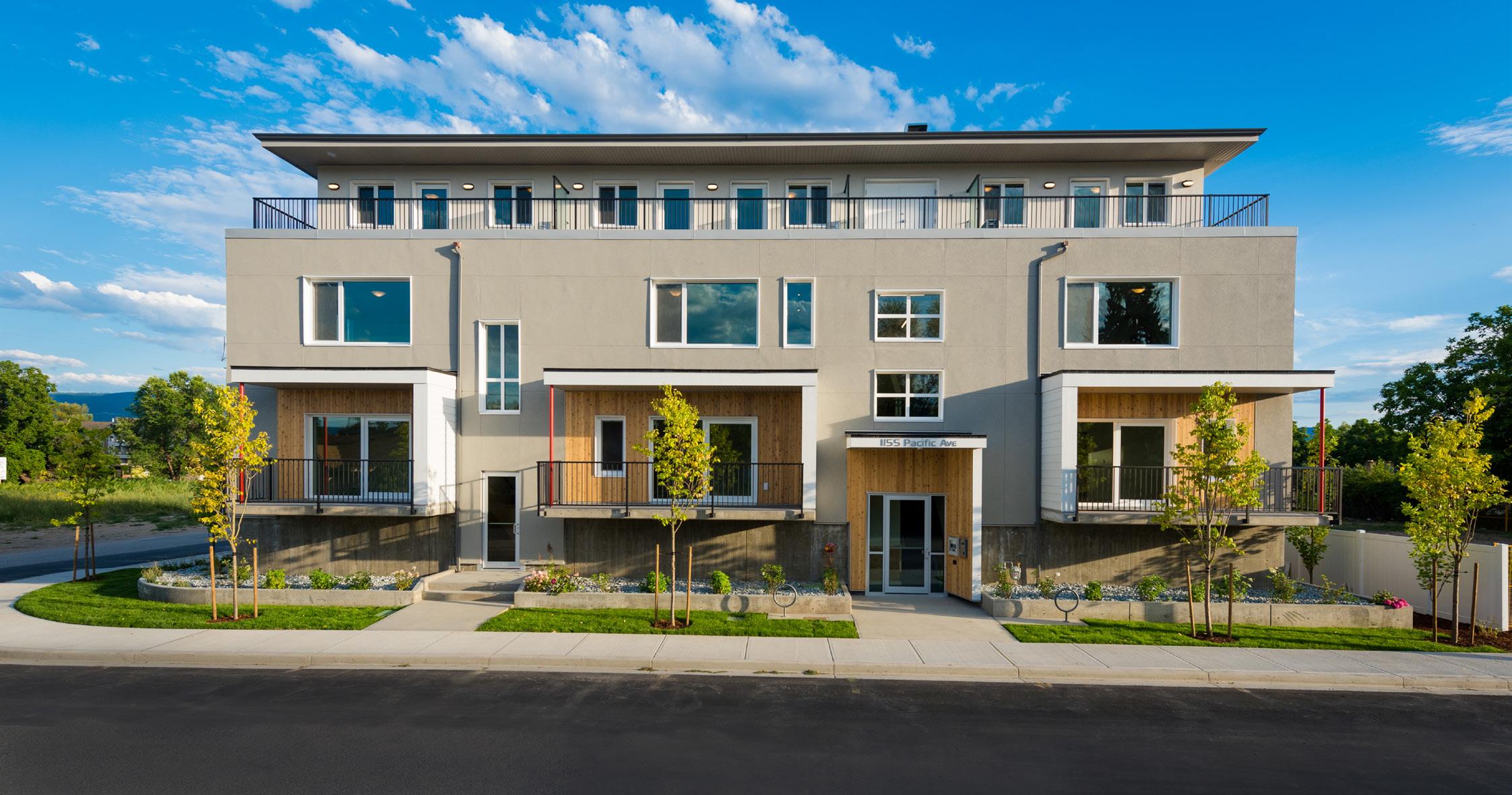
ANNUAL HOUSING REPORT | 7 KELOWNA.CA
Figure 6: Primary Rental Units Per 1,000 Residents
0 20 40 60 80 100 120 140
(Capri Area Rental Project)
Kelowna
Saskatoon Victoria Halifax
OWNERSHIP HOUSING
MULTI-FAMILY MOVES THE MARKET
In 2019, the ownership market shifted from several years of sellers’ markets with strong price growth to a more balanced market with sales prices stabilizing. There were 3,184 sales in 2019, a slight decline from 2018 and well off the peak of the market cycle in 2016 (4,603) but close to the ten-year average of 3,255 sales.xix Since the peak of the market in 2016, there has been a slowing of population growth and policies from senior levels of government (e.g mortgage stress test) have put downward pressure on housing demand.
In 2019, multi-family housing options (strata apartments & rowhousing) continued to drive the vast majority of sales activity in the low-end and mid-market segments. In total strata apartment units accounted for roughly 38 per cent (1,224) of all sales in Kelowna. Of these, roughly 65 per cent of these strata apartment sales were in the entry level segment of the market under $400,000.xx Also, a major trend for the 2019 ownership market was the high proportion of sales (44 per cent) in midmarket ($400k-$700k) for housing options such as missing middle units, more affordable single detached units and larger strata apartment units.xxi Activity in the low and mid-market segments reflect the demand for housing that is attainable for first-time home buyers and local incomes. Sales of single detached housing continues to be an important part of the market, but the overall share of sales is decreasing over time with fewer sales over a million than previous three years and growing interest in more affordable single-detached options. The end of 2019 saw roughly 2,500 active listings, reflecting a more balanced market based on the historical monthly sales numbers. xxii
2019
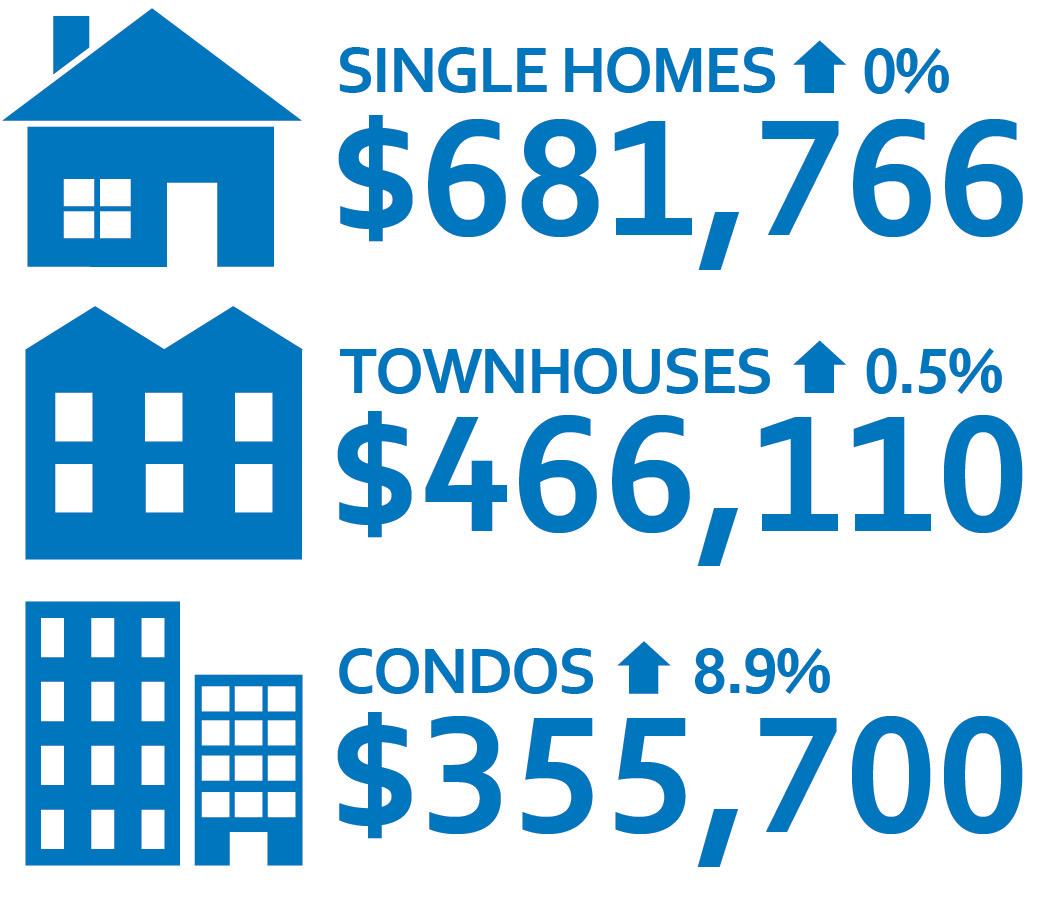
ANNUAL HOUSING REPORT | 8 KELOWNA.CA
Figure 8: Kelowna Annual Sales with Ten-year Average (2010-2019)
Kelowna Median Housing Prices
0 500 1,000 1,500 2,000 2,500 3,000 3,500 4,000 4,500 5,000 2010 2011 2012 2013 2014 2015 2016 2017 2018 2019
Single Family Dwelling Strata Unit Dwelling with Suite Duplex Unit Row Housing Unit Manufactured Home Average of Total Data From BC Assessment Authority Records 2010-2019 $300,000.00 $320,000.00 $340,000.00 $360,000.00 $380,000.00 $400,000.00 $420,000.00 $440,000.00 $460,000.00 $480,000.00 $500,000.00 $520,000.00 $540,000.00 2010 2011 2012 2013 2014 2015 2016 2017 2018 2019
Data From BC Assessment Authority Records 2019
Number
of Home Sales by Type (2010 -2019)
Median Home Price (2010 -2019)
Figure 7: Median Home Prices (All Housing Types)
ENTRY LEVEL (BELOW $400,000)
The entry level ownership market in Kelowna has changed significantly over the last ten years. In 2019, roughly 35 per cent of sales were below $400,000, representing a decrease from the 10-year average in sales in this more affordable part of the market.xxiii Over the last ten years, on average 50 per cent of sales were under $400,000, highlighting the rising housing prices and the decreasing options available at the lower end of the ownership market.xxiv In 2019, the entry level market was dominated by condo units and townhouses with roughly 86 per cent of sales accounted for by these two housing types. In contrast, from 2010-2014 roughly a third of sales were singledetached homes, highlighting how rising prices are influencing housing choices in Kelowna. The median price of condos in Kelowna in 2019 was roughly $355,000 representing an increase of nine per cent from 2018.xxv Overall, sales activity in this segment of the market in 2019 reflected more of a sellers’ market based on the strong demand at this price point and lower levels of inventory.
The entry level market tends to cater to households earning 30-75K, translating to 40-45 per cent of local households based on mortgage costs not exceeding 25% of gross income.* This portion of the market is most likely to serve first-time home buyers looking to get into the ownership market. Also, this segment serves retirees who may be down-sizing or moving to Kelowna and looking for more compact and affordable housing options in walkable areas as they enter retirement. At the same time, strata units under $400k are also attractive for investors who are looking to capitalize on rising rents and strong demand for rental housing.Overall, this segment of the market is increasingly dominated by smaller and more affordable multifamily strata apartment units.
*All mortgage affordability calculations compiled with Environics 2019 household income data and CMHC Mortgage Calculator assuming a 20% down payment and 3.1 per cent mortgage rate.
Sales in this segment of the market are concentrated in several areas of the City. One key trend is the large number of strata apartments sales close to the Downtown, highlighting the demand for housing in proximity to employment and downtown amenities. Also, there are clusters of strata apartment sales around UBC Okanagan in University South Village Centre and KLO / Pandosy near the Okanagan College, highlighting the interest in student housing within this segment of the market. Another major cluster of sales is for row housing in the Rutland area, highlighting the affordability for this more family-friendly housing type in this area of Kelowna.
& Maps compiled using BC Assessment Authority Records
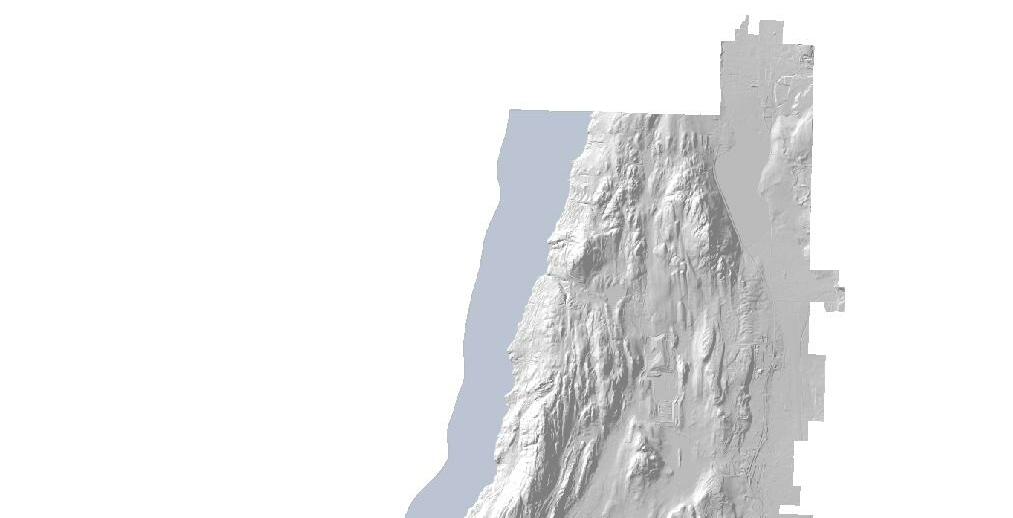



KELOWNA.CA
! ! ! ! ! ! ! ! !! ! ! ! ! ! ! ! ! ! ! ! ! ! ! ! ! ! ! ! ! ! ! ! ! ! ! ! ! ! ! ! ! ! ! ! ! ! ! !!!! !! ! ! ! ! ! ! ! ! ! ! ! ! ! ! ! ! ! ! ! ! ! ! ! ! ! ! ! ! ! ! ! ! ! ! ! !! ! !! ! ! ! ! !! ! ! ! ! !! ! ! ! ! !! ! ! ! ! ! !! ! ! ! !!!! ! ! ! ! ! ! ! ! ! ! ! ! ! !! !! ! ! ! ! ! ! ! ! ! ! ! ! ! ! ! ! ! ! ! ! ! ! !! ! !!! ! ! ! ! ! ! ! ! ! ! ! !!!! ! ! ! ! ! ! !! ! ! ! ! ! ! !! !!!!! ! ! ! ! ! !! ! ! ! !! !! ! !! ! ! ! ! !! ! ! ! !! ! ! !!!!! ! !! ! ! ! ! ! Dup lex ! Dw ell ing w ith Suit e ! Man ufact ur ed Ho m e ! Ro w Ho usin g ! SFD ! Str ata Cor e Area
! Duplex ! Dwelling with Sui te ! Manufactured Home ! Row Housing ! SF D ! Strata Cor e Area
Figure 9: 2019 Sales for Entry Level Market by Housing Type
0 100 200 300 400 500 600 700 800 900 Manufactured Home Single Detached Housing Duplex Row Housing Strata Apartments Sales
Figure 10:Entry Level Market Sales by Housing Type
Charts
MID-MARKET ($400,000-$699,999)
The mid-market was one of the major drivers of the ownership market in 2019 accounting for 44 per cent of all sales activity. xxvi The 10-year average for sales in this segment of the market is roughly 1,275 with roughly 1,400 units in 2019.xxvii Sales within this segment of the market are driven by various housing types such as strata apartment units, missing middle, and older single detached homes. Single-detached housing sales are increasingly focused in this segment of the market, accounting for roughly a third of all sales in the mid-market segment. Another important part of this segment of the market is the demand for missing middle housing forms (e.g. row housing & infill challenge units) which account for a quarter of sales in this part of the market. Lastly, this segment also saw rising prices and growing demand for centrally located strata apartment units with roughly a quarter of sales in the mid-market being strata apartment units.
The mid-market is attainable for households earning $75$130K, representing 30-35 per cent of local households based on mortgage costs for mid-market homes not exceeding 25% of gross income. The large number of sales in the mid-market segment reflects the alignment between prices and purchasing power of middle income households. The mid-market is also where attainable family-friendly housing options are priced. For example, the median price for row housing in 2019 was $466,110 which is roughly 30 per cent less than the median price of single-detached housing. Also, a significant number of downtown strata units (27 per cent of mid market sales) catering to young professionals and downsizers are driving activity within this segment of the market. In 2019, 31 per cent of all strata apartments were within the mid-market with 289 sales between $400-$525K.xxviii The higher price point sales in this part of the market are likely driven by buyers who have built equity in the market over the last 10 years and are looking to move to a larger home or downsize to a newer more centrally located unit.
Based on mapping the mid-market segment it is possible to observe several spatial trends. There is a concentration of strata apartment units in and around the Downtown and a significant number of single detached housing units and homes with suites clustered in Rutland. A high number of row housing and single detached housing units in this segment of the market are concentrated in the Glenmore Valley. Another unique cluster relates to single-detached homes with and without suites in the Black Mountain area. These clusters highlight the greater affordability that exists in the single-detached housing market in Glenmore, Rutland and Black Mountain. Meanwhile, sales in the Core Area in and around Downtown and South Pandosy reflect a greater mix of housing types with everything from strata units to older single-detached homes and missing middle housing forms (e.g. infill challenge fourplexes).




KELOWNA.CA ! ! ! ! ! ! ! ! ! ! ! ! ! ! ! ! ! !! ! ! ! ! ! ! ! ! ! ! ! ! !! ! !!!! ! ! ! ! ! ! ! ! ! ! !! !! ! ! ! ! ! !! !!!! ! ! ! ! !! ! ! ! ! ! ! !!! ! ! ! ! ! ! ! ! !! ! ! ! ! !!! ! ! ! ! ! !! ! ! ! ! ! ! ! ! ! ! ! ! ! ! ! ! !!! ! ! ! ! ! ! ! !! ! ! ! ! !! ! ! ! ! ! ! ! ! ! ! !! ! !!! ! !!! ! !! ! ! ! ! ! ! !! ! ! ! ! ! ! ! !! ! ! ! ! ! !! ! ! ! ! ! ! ! ! ! ! ! ! ! ! ! ! ! ! ! ! ! ! ! ! ! ! ! !! ! ! ! ! !! ! ! ! ! ! ! ! ! ! ! ! !! ! ! ! !!!! !! ! !! ! ! ! ! ! ! !! ! ! ! ! ! ! ! !! ! !! ! ! ! ! ! ! ! ! ! ! ! ! ! ! !!! !! ! ! ! ! !!!! ! ! ! ! ! ! ! ! ! ! ! ! !! ! ! ! ! ! ! ! ! !! ! ! !!!! ! ! ! !! ! ! !! ! ! ! ! !!!! ! ! !!!! ! !!! ! !! ! ! ! !! ! ! !!!!!! !!!!!! ! ! ! ! ! ! !! ! ! ! ! ! ! ! ! ! !!!! ! !! ! ! ! ! ! ! ! ! ! ! ! ! ! ! ! !!! ! ! ! ! ! ! ! ! !! ! ! ! ! ! ! ! ! ! ! !! ! !! ! ! ! ! ! !! ! ! !!! ! !! !! ! ! ! ! ! !! ! !! ! !!!! !! !! ! ! ! ! ! ! ! ! ! ! !! !! ! !! !! !! ! ! ! ! ! ! !!!! !! ! ! ! ! ! !! ! ! !! ! ! ! ! ! ! ! ! ! ! ! ! !! ! ! !! ! ! !! ! ! ! ! ! ! !!! ! ! !! ! ! ! ! ! ! ! !! ! ! ! ! ! ! ! ! ! !! ! !! ! ! !!!! !! !! !! ! ! ! ! !! !! ! ! ! ! ! !! ! ! ! ! !! ! ! ! ! !! ! ! ! ! ! !! ! ! ! !! ! !! !! ! ! !! ! ! ! !!!!! ! ! ! !! ! ! ! !! ! ! !! !!!! ! ! ! !!! !!!! ! !! ! !!!! !! ! ! !! ! ! ! !! ! ! ! ! ! ! ! ! ! ! !! ! !! ! !! ! ! !! !!! ! !! ! !!! ! ! ! ! !! ! ! !! ! ! ! ! ! ! ! !! !! ! ! ! !! ! ! ! ! ! ! ! ! ! ! ! ! !! ! ! ! ! ! ! ! !! !! !! ! !! ! ! ! ! ! ! ! Duplex ! Dwelling with Sui te ! Manufactured Home ! Row Housing ! SFD ! Strata Cor e Area
! Duplex ! Dwelling with Sui te ! Manufactured Home ! Row Housing ! SF D ! Strata Cor e Area
Figure 11: 2019 Sales for Mid Market by Housing Type
0 100 200 300 400 500 Manufactured Home Single Detached Housing Dwelling with Suite Duplex Row Housing Strata Apartments Mid Market Sales Sales Charts & Maps compiled using BC Assessment Authority Records
Figure 12: Sales by Housing Type ($400,000-$699,999)
HIGH END MARKET ($700,000-$1,000,000)
The upper end of the market is comprised of sales from $700,000-$1,000,000. Sales in this part of the market have grown substantially over the last 10 years from seven per cent of sales in 2010 to 21 per cent of sales 2019.xxix There were roughly 680 sales in this segment of the market which is up almost 300 from the 10-year average.xxx The growth of the high end market highlights the price increases that have occurred in the single-detached housing market as Kelowna experienced strong population and employment growth over the last five years. Also, in 2019 there were roughly 100 sales in this segment of the market for houses with suites, highlighting how buyers even in the upper end of the market are looking for mortgage helpers to improve housing affordability (Fig 15).xxxi
Prices in this segment of the market showed little change from 2018 with single-detached housing prices leveling off at $681,766 after several years of rising prices. However, the average price for new single detached homes in 2019 was $955,000 demonstrating the rising cost of developing single-detached housing in Kelowna with rising servicing and construction costs for homes in hillside areas.
The high end of the market is attainable for households earning 130k-190K, translating to 15-20 per cent of local households based on mortgage costs not exceeding 25% of gross income. However, residents who have built up equity in the rising market over the last five years are one group who may be driving sales in the high end market. Another group driving sales in this part of the market are buyers moving from larger cities who have cashed out from more expensive housing markets (e.g. Vancouver). For example, roughly 15 per cent of sales in the broader Okanagan Mainline Real Estate Board were made by buyers from Metro Vancouver.xxxiii Overall, the high end market is increasingly only available to those households earning the top local incomes in Kelowna.



Generally, this portion of the market has been most affected by the demand side policy interventions (e.g. mortgage stress test) from senior levels of government, contributing to the stabilization of prices in the single-detached housing market and a greater share of sales being pushed down to the midmarket. xxxii
Many of the sales within this segment of the market are concentrated in the hillside areas in the Upper Mission and Willden where houses tend to be larger with higher end finishing and amenities (e.g. pools). The lower end of sales in this part of the market tend to be older homes in the Core Area and Glenmore.

KELOWNA.CA ! ! ! ! ! ! ! ! ! ! ! !! !! ! ! ! ! ! ! ! ! ! ! !!!! ! ! ! ! ! ! ! ! ! !! ! ! ! ! ! ! ! ! ! ! ! ! ! ! ! ! ! ! ! ! ! !! ! !! ! ! ! ! ! ! ! ! ! ! ! ! ! ! ! ! ! ! ! !!! ! ! ! ! !! ! ! !! ! ! ! ! ! !! ! !! ! ! ! ! ! ! ! ! ! ! !! ! ! ! ! ! ! !!! !! ! ! ! !!! ! !! ! ! ! ! ! ! ! ! ! !! ! ! ! ! ! ! ! ! ! ! ! ! ! ! ! ! ! ! ! ! ! ! ! ! ! ! ! ! ! ! ! ! ! ! !!!! ! ! ! ! ! ! !! !! ! !!! ! !! ! ! !! ! !! !!! ! ! ! ! ! ! !!! ! ! ! ! ! !! !! ! ! ! ! ! ! ! ! ! ! ! ! ! ! ! ! ! ! !! !! ! ! ! ! ! ! ! !! !! !! ! !! ! !! ! ! !!! ! ! !! !!! ! ! !!! ! !!! ! ! !!!!!! ! ! !! ! ! !! ! ! ! ! ! !! ! ! ! !! !!!! ! ! ! ! !!! ! ! !! ! ! ! ! !! ! !! ! ! ! ! ! !! ! !! ! ! ! ! ! !! ! ! !!! ! ! !! ! ! !!! ! ! ! ! ! !! ! ! ! ! ! ! ! ! !!! ! ! !!! ! ! ! ! ! ! ! ! ! ! ! ! ! ! ! ! ! !! ! ! ! ! ! ! ! ! ! ! ! ! ! ! !! !! ! ! ! ! ! ! ! ! ! ! ! ! !!! !! ! ! !! ! ! ! Dup lex ! Dw ell ing w ith Suit e ! Man ufact ur ed Ho m e ! Ro w Ho usin g ! SFD ! Str ata Cor e Area
! Dup lex ! Dw ell ing w ith Suit e ! Man ufact ured Ho m e ! Ro w Ho usin g ! SFD ! Strata Core Area
Figure 13: 2019 Sales for High End Market by Housing Type
0 50 100 150 200 250 300 350 Single Detached Housing Dwelling with Suite Duplex Row Housing Strata Apartments Chart Title Sales Charts & Maps compiled using BC Assessment Authority Records
Figure 14: Sales by Housing Type High End Market
CONCLUSION
The key trends in 2019 show that Kelowna’s evolution toward a more compact and urban city continues to influence the housing market. Overwhelmingly, multi-family housing dominated building starts with 75 per cent of building permits issued for multi-family housing forms. This trend reflects the larger role of rental housing and the rise of condo living in Kelowna with over 1,200 sales for strata apartment units. The shift to multi-family housing types highlights how more people are opting to live more compactly to be closer to downtown as as well as the demand for more affordable housing options. The culmination of the boom in rental construction delivered 1,300 additional rental units, offering some relief to renters as major commercial real estate players invested heavily in the Kelowna rental market. However, on-going rental supply is required to sustain a healthy vacancy rate and to slow the pace of rent increases moving forward.
Sales activity held close to the 10-year averages, but a growing share of sales activity is in the mid-market segment. Sales in this segment highlight the demand for family friendly missing middle options such as townhouses and houseplexes. In 2019 single detached housing prices stabilized, but the lack of affordability continues to be a major challenge after five years of escalation in overall housing prices (as seen in Fig 7/16). Even in the high end of the market more and more buyers are looking for homes with suites as a mortgage helper. Overall, the Kelowna housing market saw a continued shift in housing preferences as multi-family housing in walkable urban areas continue to play a larger role in the Kelowna housing market.
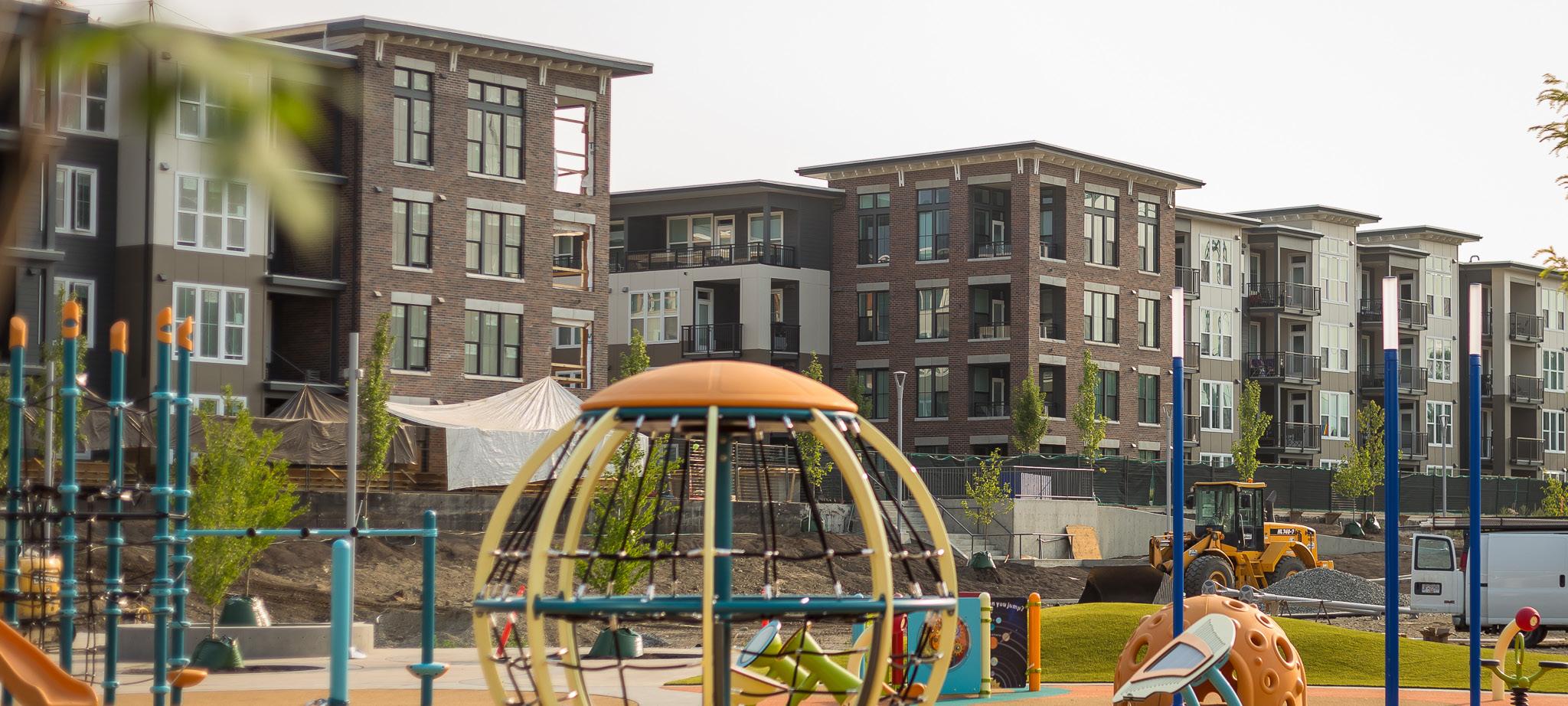
ANNUAL HOUSING REPORT | 12 KELOWNA.CA
0 20 40 60 80 100 120 2010 2011 2012 2013 2014 2015 2016 2017 2018 2019
Number of Sales for Dwelling with Suite within High End Market
Figure 15: Sales for Dwellings with Suite Above $700,000
0 100000 200000 300000 400000 500000 600000 700000 800000 900000
Figure 16: Average Single-Detached Housing Prices (2019)
Kelowna Victoria Abottsford Kamloops Nanaimo
Notes
i Canada Mortgage and Housing Corporation. 2020. Rental Market Report Data Tables: Kelowna 2020. Retrieved from: https://www.cmhc-schl. gc.ca/en/data-and-research/data-tables/rental-market-report-data-tables
ii Canada Mortgage and Housing Corporation. 2020. Rental Market Report Data Tables: Kelowna 2020. Retrieved from: https://www.cmhc-schl. gc.ca/en/data-and-research/data-tables/rental-market-report-data-tables
iii City of Kelowna. 2018. Healthy Housing Strategy. Retrieved from: https://www.kelowna.ca/our-community/planning-projects/currentplanning-initiatives/healthy-city-strategy/healthy-housing.
iv Canada Mortgage and Housing Corporation. 2020. Rental Market Report Data Tables: Kelowna 2020. Retrieved from: https://www.cmhc-schl. gc.ca/en/data-and-research/data-tables/rental-market-report-data-tables
v Canada Mortgage and Housing Corporation. 2020. Rental Market Report Data Tables: Kelowna 2020. Retrieved from: https://www.cmhc-schl. gc.ca/en/data-and-research/data-tables/rental-market-report-data-tables
vi Canada Mortgage and Housing Corporation. 2020. Rental Market Report Data Tables: Kelowna 2020. Retrieved from: https://www.cmhc-schl. gc.ca/en/data-and-research/data-tables/rental-market-report-data-tables
vii Jens Von Bergman. 2020. 2019 CMHC Rental Market Survey: Checking in With the New Rental Market Survey Data. Retrieved from: https:// doodles.mountainmath.ca/blog/2020/01/15/2019-cmhc-rental-market-survey/
viii British Columbia. 2020. Labour Market Statistics. Retrieved from: https://www2.gov.bc.ca/gov/content/data/statistics/employment-labour/ labour-market-statistics
ix CBRE. 2019. Canada Multifamily Overview 2019. Research and Reports. Retrieved from: https://www.cbre.ca/en/research-and-reports/CanadaMultifamily-Overview-2019
x City of Kelowna. 2019. Rental Housing Inventory. Retrieved from: https://kelownapublishing.escribemeetings.com/filestream. ashx?DocumentId=24010
xi Canada Mortgage and Housing Corporation. 2020. Rental Market Report Data Tables: Kelowna 2020. Retrieved from: https://www.cmhc-schl. gc.ca/en/data-and-research/data-tables/rental-market-report-data-tables
xii Steve MacNaull. 2018. Apartment Buildings Change Hands. Kelowna Daily Courier. Retrieved from:http://www.kelownadailycourier.ca/ business_news/article_b3311762-bdc2-11e8-8650-03952b034065.html
xiii Canada Mortgage and Housing Corporation. 2020. Rental Market Report Data Tables: Kelowna 2020. Retrieved from: https://www.cmhc-schl. gc.ca/en/data-and-research/data-tables/rental-market-report-data-tables
xiv Canada Mortgage and Housing Corporation. 2020. Rental Market Report Data Tables: Kelowna 2020. Retrieved from: https://www.cmhc-schl. gc.ca/en/data-and-research/data-tables/rental-market-report-data-tables
xv City of Kelowna. 2020. Internal Rental Housing Incentive Application Intake Data.
xvi City of Kelowna. 2018. Healthy Housing Strategy. Retrieved from: https://www.kelowna.ca/our-community/planning-projects/currentplanning-initiatives/healthy-city-strategy/healthy-housing.
xvii Canada Mortgage and Housing Corporation. 2020. Rental Market Report Data Tables: Kelowna 2020. Retrieved from: https://www.cmhc-schl. gc.ca/en/data-and-research/data-tables/rental-market-report-data-tables
xviii Canada Mortgage and Housing Corporation. 2020. Rental Market Report Data Tables: Kelowna 2020. Retrieved from: https://www.cmhc-schl. gc.ca/en/data-and-research/data-tables/rental-market-report-data-tables
xix - xxxii BC Assessment Authority. 2020. 2019 Sales Data. Retrieved January 2020.
xxxii Okanagan Mainline Real Estate Board. 2020. 2019 Monthly Buyers Survey Data for Okanagan. Provided by OMREB January 2020.
13 | ANNUAL HOUSING REPORT KELOWNA.CA
 PREPARED
PREPARED















